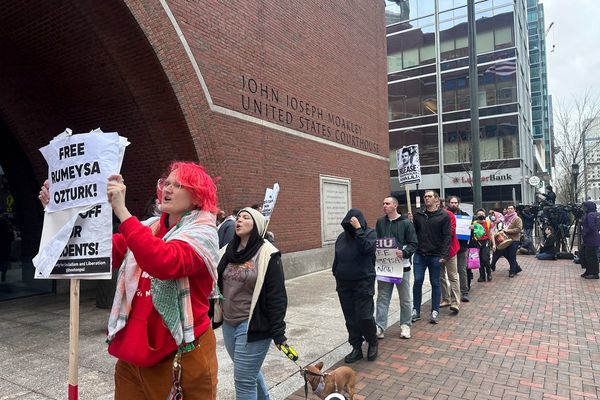
Australia’s rental crisis is showing modest signs of easing, with vacancy rates in the major cities improving slightly, but from levels that remain about half of pre-Covid levels, according to data group PropTrack.
Rental vacancy rates nationally increased 0.02 percentage points to 1.45% last month, while those in capital cities edged 0.03 percentage points higher to 1.42%. Both were just shy of half the rates in March 2020.
On a quarterly basis, the vacancy rate in Sydney improved 0.28 percentage points to 1.73%, the largest improvement among the major cities. For Melbourne, the rate increased 0.16 percentage points to 1.4%, while Brisbane’s was little changed at 1.12% and even fell slightly compared with May.
Perth’s rental vacancy rate was just over 1% in June, about 0.12 percentage points higher than three months earlier but still 60% below pre-pandemic levels.
More rental properties coming on to the market contributed to the rise. The quarterly improvement of 0.17 percentage points in the June quarter was the most significant easing of conditions since November 2021, PropTrack said.
“The rental market is showing signs of easing,” PropTrack’s senior economist and author of a monthly vacancy report, Paul Ryan, said. “[However] it remains difficult to find a rental across the country and we expect rents to continue to grow quickly, placing additional financial pressure on renters.”
Rents in cities such as Sydney have been soaring as landlords respond to a population growth spurt. The construction industry has also struggled to increase supply as it copes with worker shortages, steep materials costs and rising bankruptcies.
CoreLogic, another data group, estimates national rents have increased 27.4% on average since the onset of Covid. That’s equivalent to an extra $127 a week for a median dwelling.
Rents rose 10.2% on average in 2022, a record pace. For the year to June, the pace had eased to a 9.7% annual rate “suggesting an increasing portion of tenants are reaching their affordability ceiling,” CoreLogic’s Kaytlin Ezzy said in a separate report.
The chief executive of the Tenants’ Union of New South Wales, Leo Patterson Ross, said vacancy rates varied depending on the provider.
“All the different methodologies have limitations,” he said. “We’d really like to see a standardised measure held by a government agency, in the same way we have a standardised measure of unemployment.”
While the reports point to a slightly higher vacancy rate in most regions, the change was still well short of a balanced level that would take some of the pressure of rental increases. “We need to return to something above 3% and stay there for a significant period before we can expect the pressure on pricing to really ease,” Patterson Ross said.
Separately, NSW has appointed Trina Jones, chief executive of Homelessness NSW, as the state’s first rental commissioner to help the government to design a “fairer and more modern” rental market.
Jones’s tasks include making it easier for renters to have pets, ending “no-grounds” evictions, allowing renters to transfer bonds between properties and improving the protection of renters’ information and privacy.







